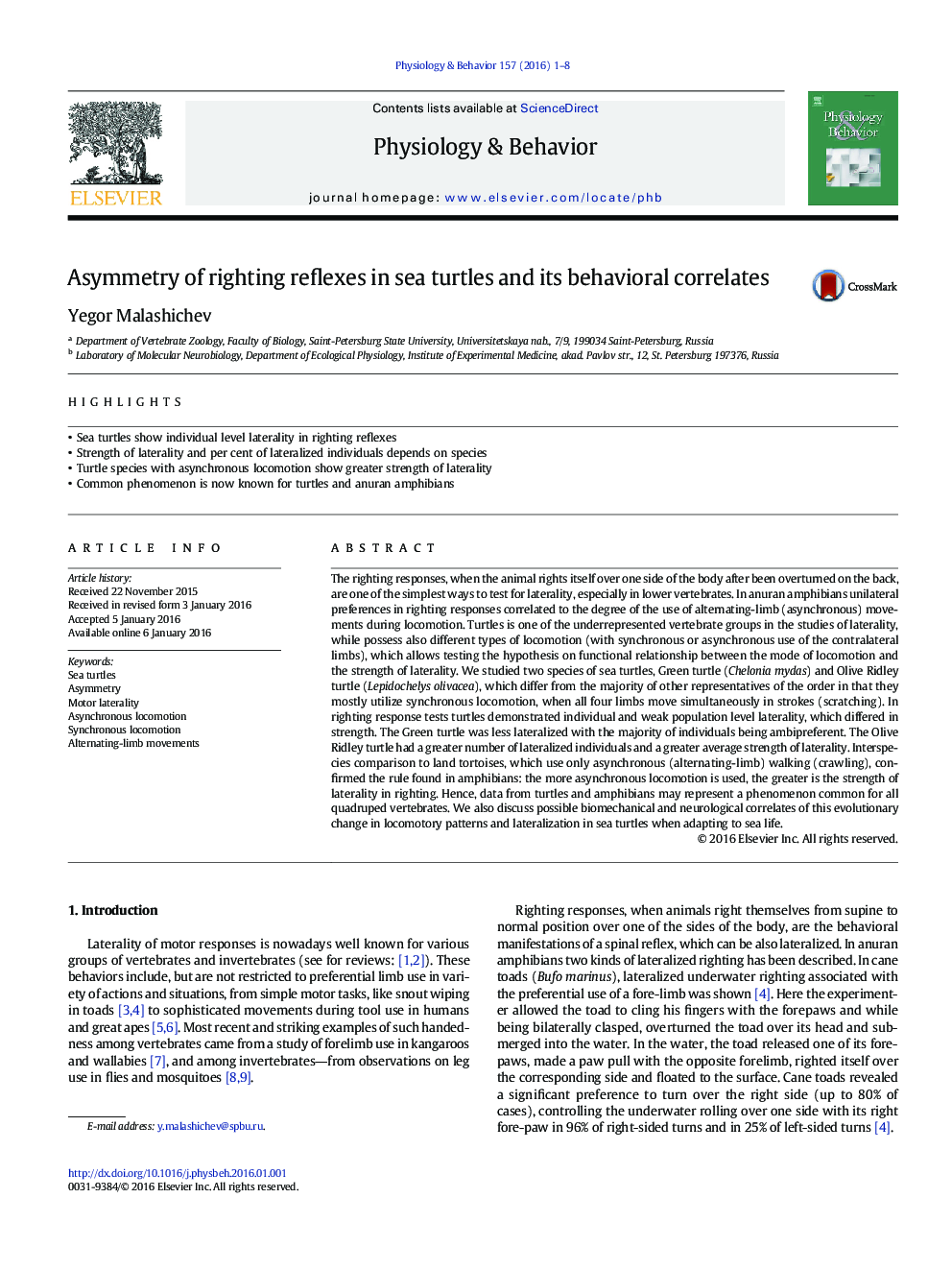| کد مقاله | کد نشریه | سال انتشار | مقاله انگلیسی | نسخه تمام متن |
|---|---|---|---|---|
| 2844000 | 1571161 | 2016 | 8 صفحه PDF | دانلود رایگان |
• Sea turtles show individual level laterality in righting reflexes
• Strength of laterality and per cent of lateralized individuals depends on species
• Turtle species with asynchronous locomotion show greater strength of laterality
• Common phenomenon is now known for turtles and anuran amphibians
The righting responses, when the animal rights itself over one side of the body after been overturned on the back, are one of the simplest ways to test for laterality, especially in lower vertebrates. In anuran amphibians unilateral preferences in righting responses correlated to the degree of the use of alternating-limb (asynchronous) movements during locomotion. Turtles is one of the underrepresented vertebrate groups in the studies of laterality, while possess also different types of locomotion (with synchronous or asynchronous use of the contralateral limbs), which allows testing the hypothesis on functional relationship between the mode of locomotion and the strength of laterality. We studied two species of sea turtles, Green turtle (Chelonia mydas) and Olive Ridley turtle (Lepidochelys olivacea), which differ from the majority of other representatives of the order in that they mostly utilize synchronous locomotion, when all four limbs move simultaneously in strokes (scratching). In righting response tests turtles demonstrated individual and weak population level laterality, which differed in strength. The Green turtle was less lateralized with the majority of individuals being ambipreferent. The Olive Ridley turtle had a greater number of lateralized individuals and a greater average strength of laterality. Interspecies comparison to land tortoises, which use only asynchronous (alternating-limb) walking (crawling), confirmed the rule found in amphibians: the more asynchronous locomotion is used, the greater is the strength of laterality in righting. Hence, data from turtles and amphibians may represent a phenomenon common for all quadruped vertebrates. We also discuss possible biomechanical and neurological correlates of this evolutionary change in locomotory patterns and lateralization in sea turtles when adapting to sea life.
Journal: Physiology & Behavior - Volume 157, 1 April 2016, Pages 1–8
